Ever wondered how to measure wheel stud pattern correctly? This crucial measurement ensures your new wheels will fit perfectly on your vehicle, saving you time, money, and potential safety hazards down the road.
Whether you’re upgrading your wheels or replacing damaged ones, knowing your vehicle’s exact bolt pattern is essential. The stud pattern (also called bolt pattern or PCD – Pitch Circle Diameter) refers to the number of wheel studs and the diameter of the circle they form. With the right tools and technique, you can measure this pattern yourself in just minutes, eliminating guesswork when shopping for new wheels.
Understanding Wheel Stud Patterns
Wheel stud patterns serve as unique identifiers for vehicle wheel compatibility. They represent a exact configuration that determines which wheels fit your vehicle correctly.
What Is a Wheel Stud Pattern?
A wheel stud pattern (also called bolt pattern or PCD) refers to the exact arrangement of lug bolts or wheel studs on your vehicle’s hub. It’s defined by two critical measurements: the number of studs and the diameter of the imaginary circle they form. For example, a “5×114.3” pattern indicates 5 studs arranged in a circle with a 114.3mm diameter. Different vehicle manufacturers use distinct patterns for their models, creating a standardized system for wheel compatibility. Common patterns include 4×100 for many compact cars, 5×114.3 for many Japanese vehicles, and 6×139.7 for many trucks and SUVs.
Why Wheel Stud Patterns Matter
Wheel stud patterns matter because they ensure proper wheel fitment and vehicle safety. Using wheels with incorrect stud patterns can lead to severe consequences including improper mounting, excessive vibration, and potential wheel detachment while driving. Knowing your exact pattern saves time and money when shopping for new wheels by immediately narrowing down compatible options. The pattern also affects performance aspects like weight distribution and brake clearance. Experienced mechanics like Liam Kohn have seen countless instances where customers damaged expensive alloy wheels attempting to force-fit incompatible patterns, resulting in repair costs exceeding $500 in many cases.
Tools Needed for Measuring Wheel Stud Patterns
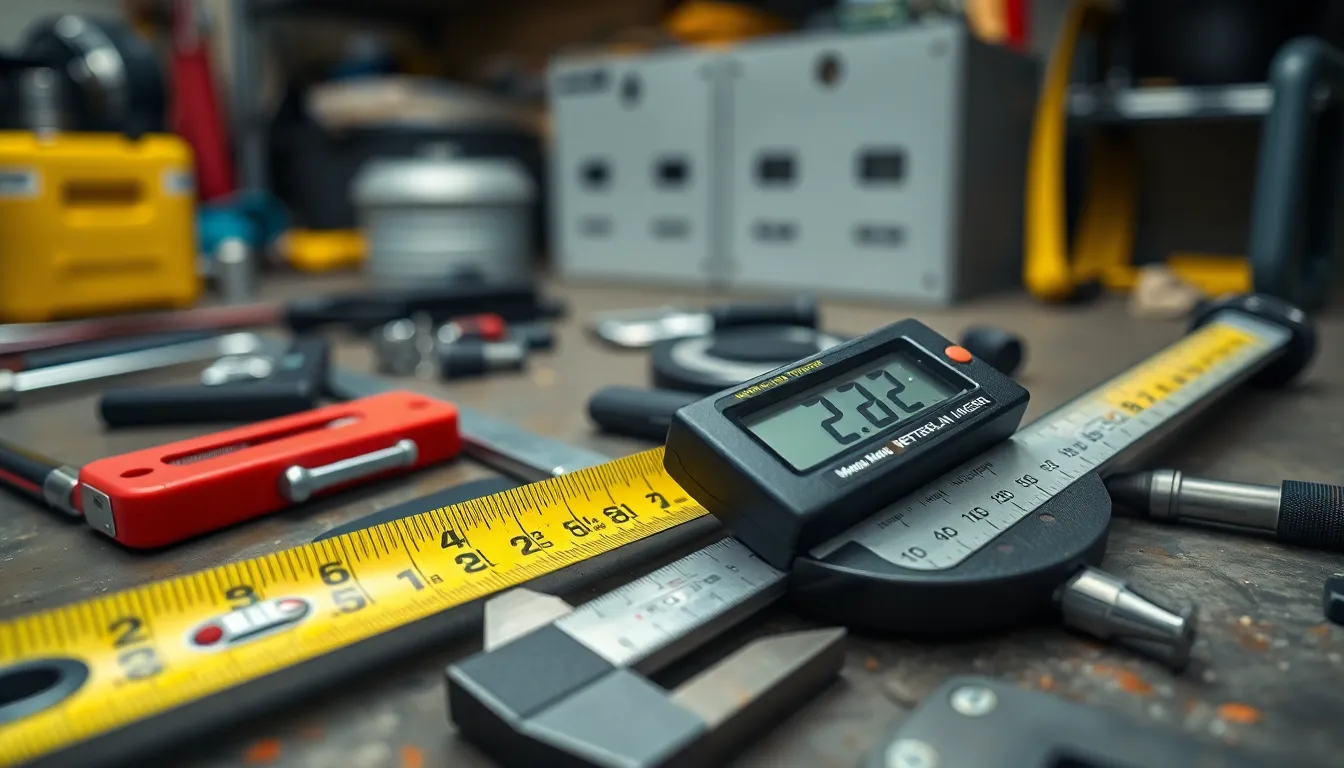
Accurate measurement of wheel stud patterns requires exact tools to ensure precision. These tools range from common household items to specialized automotive equipment.
Basic Measuring Tools
A standard tape measure or ruler (preferably with millimeter markings) provides sufficient accuracy for most wheel stud pattern measurements. Metric measurements offer greater precision than imperial units when dealing with wheel specifications. Many automotive manufacturers use millimeter specifications for bolt patterns, making a metric measuring tool essential. Calipers deliver even more accurate results when measuring between stud centers, especially for odd-numbered patterns where precision is crucial.
Professional Measurement Tools
Dedicated bolt pattern gauge tools simplify the measurement process by fitting directly over wheel studs to provide instant pattern readings. Digital calipers offer highly accurate measurements down to a tenth of a millimeter, eliminating guesswork when identifying exact patterns like 5×114.3 versus 5×115. Wheel stud pattern templates serve as quick reference tools used by professional mechanics to identify common patterns without taking measurements. These templates contain pre-cut holes matching standard bolt patterns, allowing for rapid pattern verification by simply placing them over the wheel hub.
How to Measure Wheel Stud Patterns Accurately
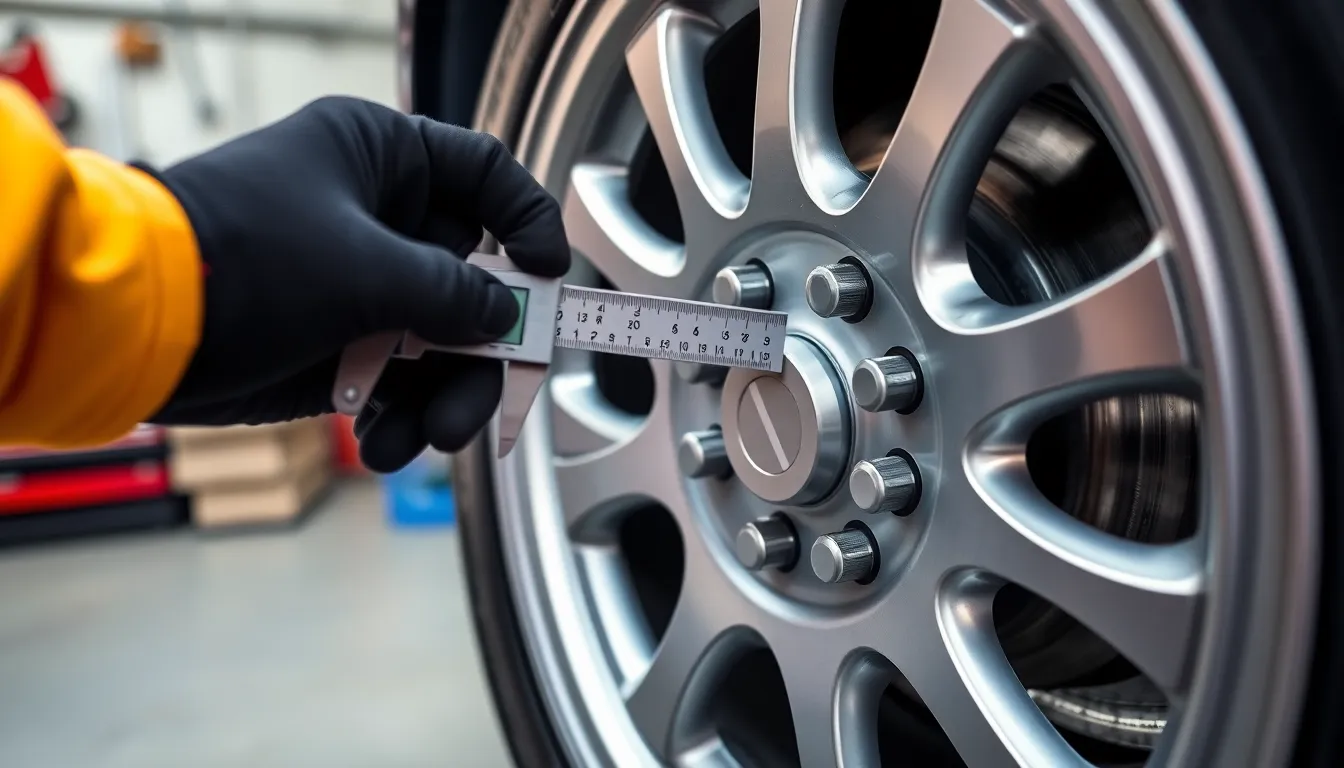
Measuring wheel stud patterns requires precision to ensure proper wheel fitment. You’ll need to identify two key components: the number of lug holes and the bolt circle diameter (BCD).
Counting the Number of Lugs
The first step in measuring a wheel stud pattern is counting the total number of lug holes on your wheel. Common configurations include 4, 5, 6, or 8 lug holes, with 5-lug patterns being particularly prevalent in passenger vehicles. This number forms the first part of your bolt pattern notation and is essential for identifying compatible wheels. Simply count all the holes where lug nuts or bolts secure the wheel to your vehicle’s hub.
Measuring the Bolt Circle Diameter
The bolt circle diameter (BCD) represents the diameter of an imaginary circle passing through the center of all lug holes. Your measurement technique varies depending on whether your wheel has an even or odd number of lugs:
For wheels with an even number of lugs (4, 6, 8), measure from the center of one lug hole directly across to the center of the opposite lug hole. This straight-line measurement gives you the bolt circle diameter.
For wheels with 5 lugs, the measurement process differs slightly. Since no lug hole sits directly opposite another, measure from the center of one lug hole to the outer edge of the lug hole that’s positioned two spaces away. This exact measurement accounts for the uneven spacing in 5-lug patterns.
Once completed, express your bolt pattern as “[Number of lugs] x [Bolt circle diameter in millimeters]” – for example, 5×114.3mm.
Common Measurement Methods
Several effective tools can help you measure wheel stud patterns accurately. A ruler or tape measure with millimeter markings works for basic measurements, though precision may be limited. Calipers provide greater accuracy, especially when measuring the centers of lug holes.
Specialized measurement tools like dedicated bolt pattern gauges simplify the process further. Speedway Motors offers exact templates designed for verifying bolt patterns quickly, which are particularly helpful for challenging 5-lug patterns.
When taking measurements, position your measuring tool precisely at the center of each lug hole. Even small deviations can lead to incorrect readings and potential fitment issues. Taking multiple measurements and calculating an average can help ensure accuracy when using basic tools.
Popular Wheel Stud Pattern Sizes
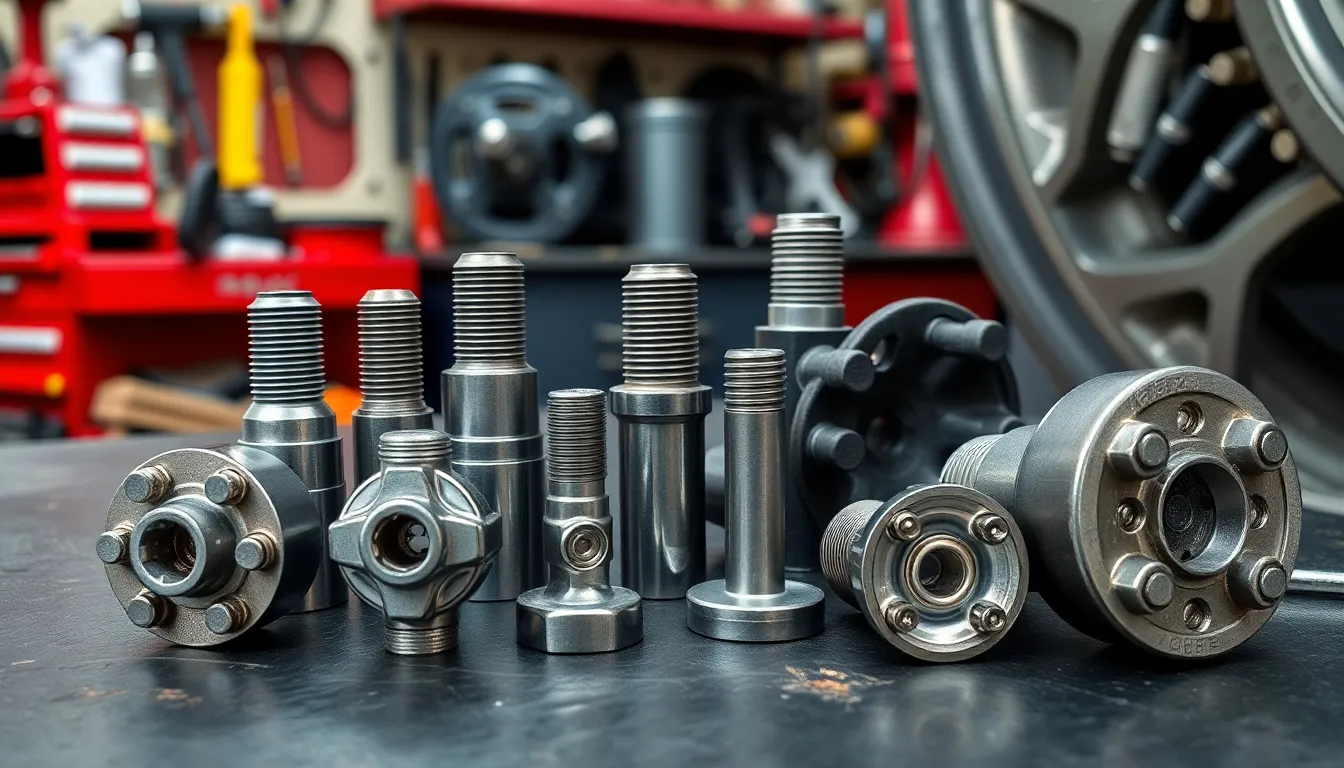
Wheel stud patterns vary significantly across different vehicle types and manufacturers. Knowing the common patterns for your exact vehicle category helps narrow down compatible wheel options and ensures proper fitment.
Passenger Car Patterns
Most passenger cars feature either 4-lug or 5-lug wheel configurations, each with exact measurements that vary by manufacturer. The 4-lug patterns commonly found on compact and economy cars include 4x100mm and 4x98mm, with the 4x100mm being particularly prevalent on Honda, Toyota, and many European vehicles. Many sedans and sports cars use 5-lug patterns, with 5x100mm (common on Subaru and some Volkswagen models), 5×114.3mm (found on many Japanese cars including Toyota, Honda, and Nissan), and 5x120mm (typical on BMW vehicles) being the most widespread configurations in the passenger car segment.
Truck and SUV Patterns
Trucks and SUVs typically employ larger, more robust wheel stud patterns to handle increased weight and torque. The 6-lug configuration is standard on many pickup trucks and larger SUVs, with 6×139.7mm (also expressed as 6×5.5 inches) being extremely common on vehicles like the Chevrolet Silverado, Toyota Tacoma, and Ford F-150. Heavier duty trucks often use 8-lug patterns, particularly the 8x170mm pattern found on Ford Super Duty trucks. Though less common on trucks, 5-lug patterns appear on some SUVs and lighter trucks, typically with larger diameters than passenger cars, such as 5×139.7mm (on some Jeep models) or 5x127mm (on some GM SUVs). The increased bolt circle diameter provides greater stability and load-bearing capacity needed for these larger vehicles.
Dealing With Wheel Adapters and Spacers
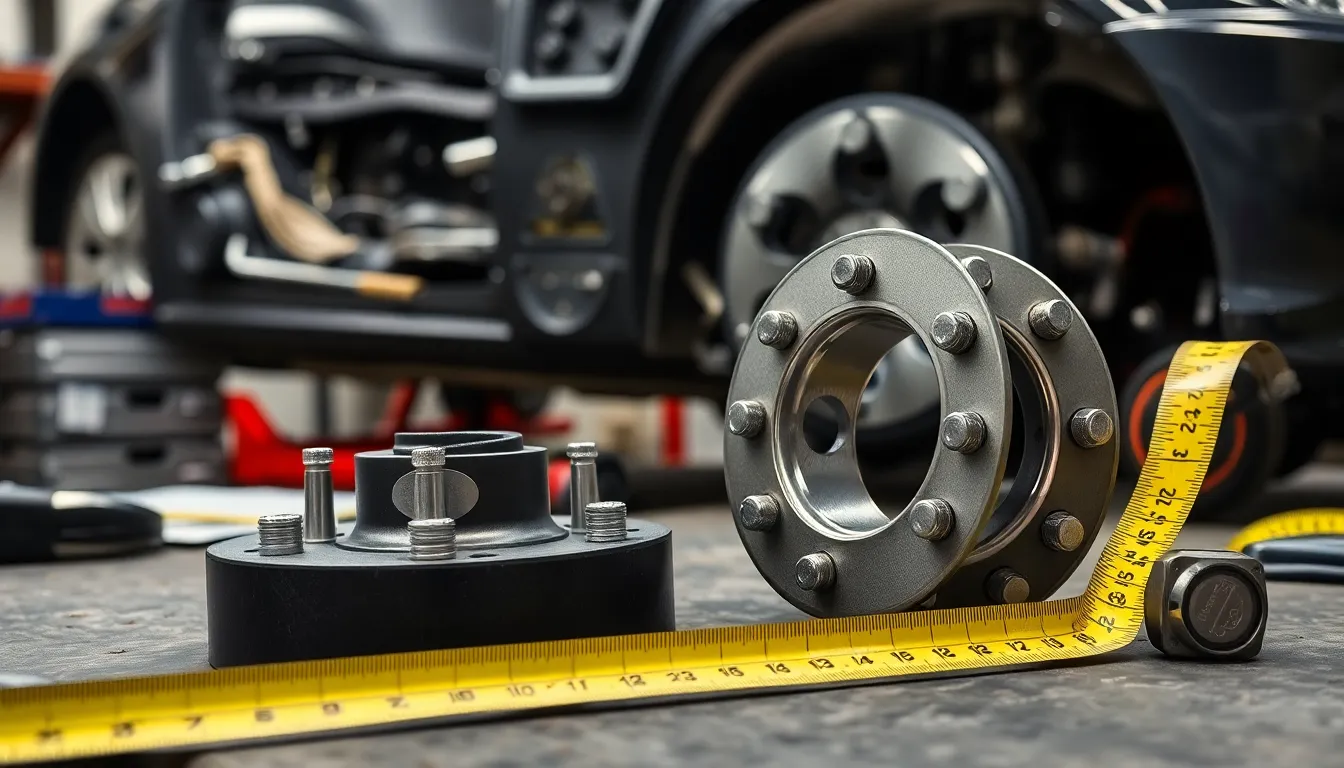
Wheel adapters and spacers require precise bolt pattern measurements to ensure proper fitment with your vehicle’s hub. These components serve as intermediaries between your wheels and hubs, making accurate measurements absolutely critical for safety and performance.
Adapters allow you to mount wheels with different bolt patterns than your vehicle’s original specifications. For example, if your vehicle has a 5×114.3mm pattern but you’ve purchased wheels with a 5x120mm pattern, a properly sized adapter bridges this difference.
Spacers, meanwhile, push your wheels outward from the hub by a specified distance. This modification creates additional clearance for larger brake components or achieves a wider stance for improved stability and aesthetics.
Before purchasing either component, measure both your vehicle’s bolt pattern and the pattern of your desired wheels. Taking these measurements prevents costly mistakes and potential safety hazards that occur when adapters or spacers don’t properly match your exact configuration.
Installation of adapters and spacers demands attention to torque specifications. Over-tightening or under-tightening can lead to dangerous situations including vibration, wheel loosening, or even complete wheel separation while driving.
Many enthusiasts find that quality adapters from reputable manufacturers offer the safest solution when mixing different bolt patterns. High-grade materials and precise machining ensure the adapter can handle the forces exerted during acceleration, braking, and cornering without compromising structural integrity.
Hub-centric adapters and spacers align perfectly with your vehicle’s hub diameter, preventing vibration issues that plague cheaper, non-hub-centric alternatives. This design characteristic maintains the wheels’ concentric mounting position relative to the axle, preserving smooth operation at all speeds.
Common Mistakes When Measuring Wheel Stud Patterns
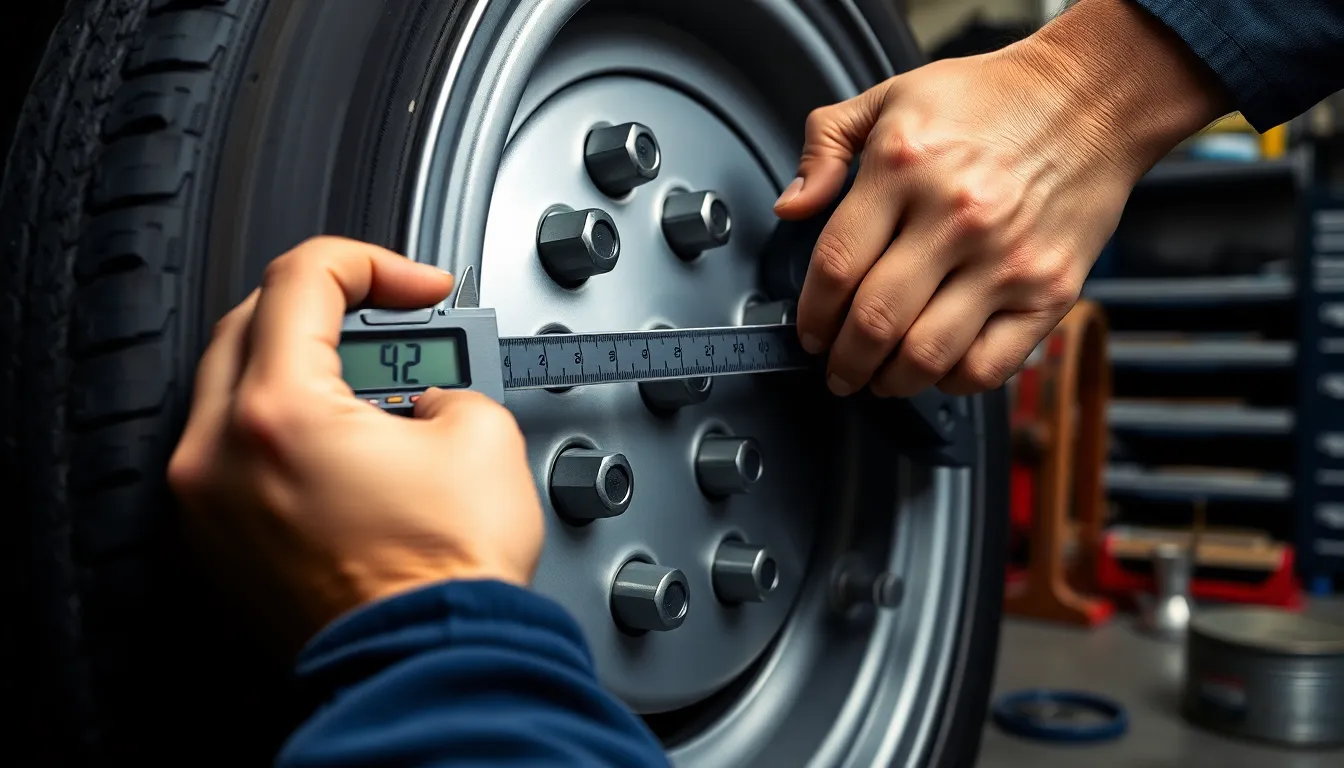
Measuring wheel stud patterns accurately requires attention to detail, as even small errors can lead to improper wheel fitment. Many DIY mechanics make several common errors that compromise measurement accuracy.
Measuring Edge to Edge Instead of Center to Center
The most frequent mistake is measuring from the edge of one lug hole to the edge of another. Accurate measurements require placing your measuring tool at the center of each lug hole. This center-to-center measurement provides the true bolt circle diameter that manufacturers use in their specifications.
Using Incorrect Measuring Technique for 5-Lug Wheels
Five-lug patterns cause particular confusion due to their asymmetrical layout. Many people incorrectly try to measure directly across the wheel, but since there’s no directly opposite lug, this method yields inaccurate results. The correct approach involves measuring from the center of one lug to the outer edge of the lug hole that’s two positions away.
Mixing Measurement Units
Confusing millimeters with inches creates important fitment problems. Most modern vehicles use metric measurements, so a reading of “4.5 inches” doesn’t translate neatly to the manufacturer’s specifications like “114.3mm.” Always use millimeters when measuring and recording your wheel stud pattern to avoid conversion errors.
Not Accounting for Different Lug Configurations
Each lug configuration (4, 5, 6, or 8) requires a exact measuring technique. Applying the 4-lug measuring method to a 5-lug wheel produces incorrect readings. The measurement approach must match the exact lug count on your wheel.
Failing to Verify With Vehicle Specifications
Many DIYers rely solely on their measurements without cross-checking against the manufacturer’s specifications. Vehicle owner’s manuals, manufacturer websites, or wheel fitment guides often list the correct bolt pattern. Comparing your measurement with these official specifications confirms accuracy and prevents costly purchasing mistakes.
Conclusion
Measuring your wheel stud pattern correctly is essential for safe driving and proper wheel fitment. With the right tools and techniques you’ve learned here you can confidently determine your vehicle’s bolt pattern without professional help.
Remember to count the lugs accurately measure from center to center and always use metric measurements for precision. Whether you’re upgrading to new wheels or using adapters proper measurements will save you time money and potential safety hazards.
Take your time during measurement and double-check your results against manufacturer specifications. By avoiding common measuring mistakes and understanding your vehicle’s exact pattern requirements you’ll ensure your new wheels fit perfectly every time.
Frequently Asked Questions
What is a wheel stud pattern?
A wheel stud pattern (also called bolt pattern or PCD) is the arrangement of lug bolts or wheel studs on a vehicle’s hub. It consists of two numbers: the count of studs and the diameter of the circle they form. For example, “5×114.3” means 5 studs arranged in a circle with a 114.3mm diameter. This measurement is crucial for ensuring wheels properly fit your vehicle.
Why is measuring the wheel stud pattern important?
Measuring the wheel stud pattern correctly ensures your new wheels will fit properly on your vehicle. Using wheels with incorrect patterns can lead to serious safety issues including improper mounting and potential wheel detachment while driving. Knowing your exact pattern saves time and money when shopping for wheels by narrowing down compatible options and preventing costly mistakes.
What tools do I need to measure wheel stud patterns?
You can use basic tools like a tape measure or ruler with millimeter markings for adequate accuracy. For more precise measurements, especially with odd-numbered patterns, calipers are recommended. Professional tools include dedicated bolt pattern gauges and digital calipers. Some mechanics use wheel stud pattern templates for quick reference. Most importantly, ensure your measuring tool can provide metric measurements.
How do I measure a 4-lug or 6-lug wheel pattern?
For even-numbered patterns (4, 6, or 8 lugs), measure directly across from one lug hole to the opposite lug hole, center to center. This straight-across measurement gives you the bolt circle diameter (BCD). Be sure to measure in millimeters for accuracy, as most manufacturers use metric specifications. Double-check your measurement to avoid fitment issues.
How do I measure a 5-lug wheel pattern?
For a 5-lug pattern, you cannot measure directly across. Instead, measure from the center of one lug hole to the outer edge of the lug hole that’s two positions away. Alternatively, measure from the back of the wheel, from center to center of two adjacent lugs, then multiply by 1.701 to calculate the bolt circle diameter. Digital calipers offer the best precision for this measurement.
What are common wheel stud patterns for passenger cars?
Most passenger cars use 4-lug or 5-lug configurations. Common patterns include 4x100mm (popular in compact cars), 5x100mm (found in many Subaru models), and 5×114.3mm (widely used in Honda, Toyota, and many other manufacturers). European vehicles often use 5x112mm (Audi, Mercedes) or 5x120mm (BMW). Knowing these standards helps identify compatible wheels for your vehicle.
What wheel stud patterns are common for trucks and SUVs?
Trucks and SUVs typically use larger, more robust patterns to handle increased weight and torque. Common patterns include 6×139.7mm (many Toyota, Chevy, and GMC trucks), 6x135mm (Ford F-150), and 8x170mm (Super Duty trucks). These larger configurations provide additional strength for heavy-duty applications and off-road use.
Can I use wheel adapters if my wheels have a different stud pattern?
Yes, wheel adapters can convert your vehicle’s bolt pattern to accommodate wheels with different patterns. However, proper measurement of both your vehicle’s pattern and the desired wheels is essential before purchasing adapters. Always choose quality adapters from reputable manufacturers, ensure they’re hub-centric when possible, and follow torque specifications during installation to maintain safety.
What are common mistakes when measuring wheel stud patterns?
Common mistakes include measuring from edge to edge instead of center to center, using incorrect techniques for 5-lug patterns, and not using metric measurements. Some people also forget to verify measurements against vehicle specifications. These errors can lead to purchasing incompatible wheels or adapters. Take your time, double-check your work, and consider having a professional confirm your measurements if uncertain.
Do wheel spacers require specific stud pattern measurements?
Yes, wheel spacers must match your vehicle’s exact stud pattern to fit properly. Spacers push your wheels outward for additional clearance or improved stability but require precise measurements to ensure safety. When installing spacers, you’ll need to know both your vehicle’s bolt pattern and the pattern of your wheels. Always use quality spacers and follow manufacturer torque specifications during installation.
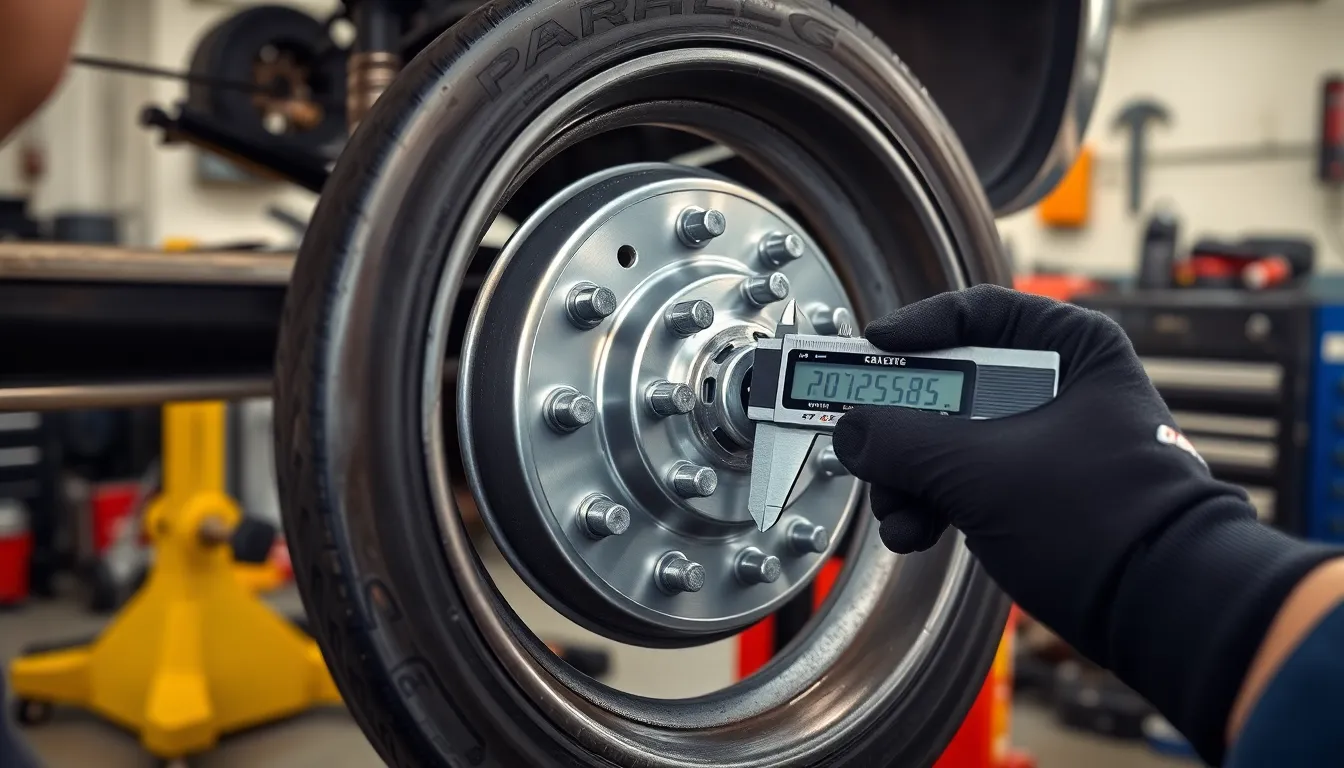
This web site is really a walk-through for all of the info you wanted about this and didn’t know who to ask. Glimpse here, and you’ll definitely discover it.